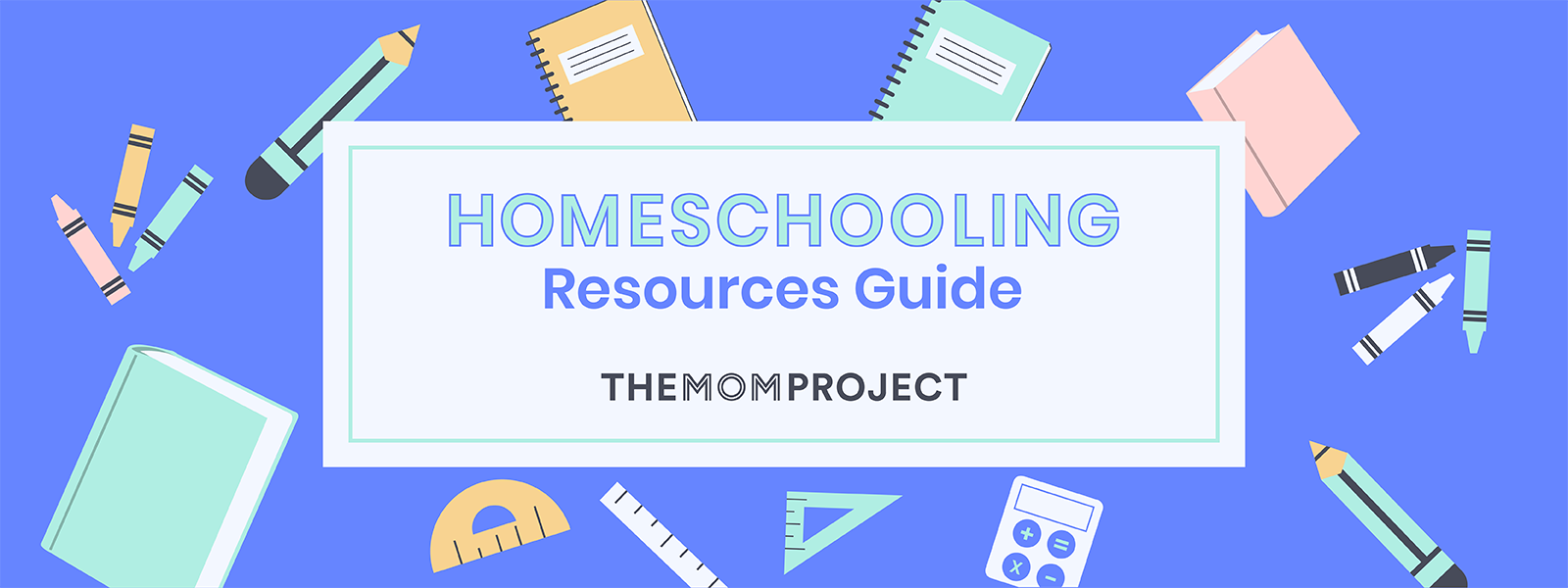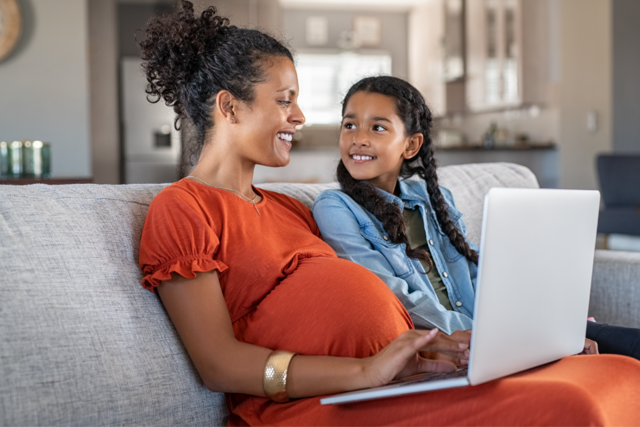Diving into homeschooling for the first time? Homeschooling is a big world of opportunities but it can be tough to know where to begin, or if the option is right for you. When our family started homeschooling a few years ago there was a lot to explore. I read a plethora of books, met up for coffee with homeschooling veterans and more — then took all of that knowledge with a grain of salt.

At the end of the day, one of the beautiful aspects of homeschooling is that you know your child(ren) best! You will intuitively know what they will be interested in, what might have the best chance of working for learning and what you are capable of handling.
With all that said, it’s nice to have some ideas to start with. And so, we’re here for you, sis. Below you’ll find a few of the major points to get started with. Deep breath. Dive in.
You’ve got this 💪
— Tiffany Nieslanik, Community Program Manager, The Mom Project
Understand your legal requirements
First, be sure to find out the legal requirements for homeschooling in your area before you start. The Homeschool Legal Defense Association is a great place to start learning more about your state’s laws.
Research teaching methodologies
You might want to decide which method of schooling you’d like to try. Teaching methodologies can help guide you in how you educate your child. And you don’t have to stick to just one. In our home we use a mixture of all four. And we interchange them depending on the subject, the age of the child I’m working with and their own natural learning preferences.
If you’re new to homeschooling, it’s worth reading a brief overview of these methods to see if one really resonates with you. Here are the major ones with a few resources to explore:
Classical Education
One of the most popular homeschooling styles borrows the wisdom of time-tested educational practices dating from as far back as Ancient Greece and Rome. The subject areas are, as much as possible, interwoven into a chronological reading plan. In this way, students are equipped to understand the consequence of ideas over time.
This method uses the trivium as its main focus. The trivium consists of three stages: grammar (knowledge), logic (understanding) and rhetoric (wisdom). The goal is to train the student to think for themself.
👉Check out The Well Trained Mind by Susan Wise Bauer if you’re interested in learning more about Classical Education.
Charlotte Mason
Based on the teachings of 19th century homeschooling pioneer Charlotte Mason, this Christian homeschool style utilizes short periods of study coupled with nature walks, nature journals, history portfolios and lots of practice in observation, memorization and narration. This method focuses on a child-directed, observational approach that is easy on the budget, fairly flexible, and which lets children discover and learn at their own pace.
👉Read more about the methodology via AmblesideOnline.
Montessori Method
Coined by early 20th century Italian physician and educator, Maria Montessori (1870-1952), this method grew out of her psychology work with children with special needs. This method offers a humanistic, student-based approach utilizing free movement, large-unstructured time blocks (up to 3 hours), multi-grade classes, and interest-based and individualized learning plans. Teachers instruct only indirectly, using lots of manipulatives (tactile objects like tools and toys) and by giving the student a range of options from which to choose.
👉Interested in learning more? Read The Montessori Method by Maria Montessori.
Unschooling
Based largely on the work of homeschooling pioneer John Holt, Unschooling is a free-form learning model which is student-centered, unconventional and individualistic. Learning plans and study projects focus largely on the student’s interests but with high priority on experiential, activity based and learn-as-you-go education. In this model, parent-teachers tend to be facilitators rather than lecturers, instructors or otherwise "conventional" teachers.
👉Learn more about Unschooling via John Holt’s website or try The Unschooling Handbook: How to Use the Whole World As Your Child's Classroom by Mary Griffith.
School-at-Home
School-at-Home" could also be a good fit if you’re interested in pursuing virtual learning. This is essentially the same as your local public or private school classroom, but it’s implemented at home. School-at-Home education is typically organized around complete curriculum packages, often arranged by school year and might even be the same curriculum your local public or private school uses.
Plan your curriculum
After choosing a method you can start planning a curriculum working with the resources mentioned in the education method you choose. When thinking about a curriculum, you’ll want to consider the content, the approach and the delivery it offers. And keep in mind that mixing and matching curriculum is completely fine. In homeschooling there are no hard and fast rules!
Find extra resources and support
There are numerous homeschooling resources out there to support your journey. Here are some to consider:
- Other Goose (Ages 2-7): Other Goose is an international, online homeschooling co-op for families.
- Reading Eggs (ages 2-13): Reading Eggs provides a comprehensive range of research-based online reading lessons, activities and books that teach children literacy skills.
- Khan Academy (Ages 2-18): The Khan Academy is a non-profit educational organization created in 2006 by educator Salman Khan to provide "a free, world-class education for anyone, anywhere".
- Outschool (Ages 3-18): Outschool is a marketplace of live online classes for kids that offers fun, social, and safe learning experiences led by passionate teachers. Outschool has also put together some helpful tips for homeschooling with a corresponding Fall Planning Workbook.
- Education.com (Grades PreK-5th): Parents and teachers can follow Education.com’s guidance step-by-step, create their own curriculum, or deep-dive into specific areas with over 30,000 games, worksheets, activities, and lessons.
- BrainQuest Workbooks (Grades PreK-5th): Curriculum-based activities, exercises, games and challenges by grade level.
- Wide Open School (Grades PreK-12th): A free, curated collection of online learning experiences for kids.
- Crash Course: Free educational courses and videos for learners of all ages.
- [Video] Anti-Bias Education at Home with Britt Hawthorne & The Mom Project: Educational session designed to help parents and caregivers learn how to dismantle the color-blind assumption and prepare our children to work toward justice
- [Blog post] WFHWK: The Mom Project Kid Resource Guide: We compiled a list of activities, apps and websites that help encourage learning through play.
- [Newsletter] PBS KIDS Daily: Weekday newsletter from PBS that offers activities and tips you can use to help kids play and learn at home.
Shift to a "School-at-Home" Mindset
Create your schedule and stick to it strictly for two weeks, then loosen up if you can. It helps shift to a school-at-home mindset. A big benefit of homeschooling is learning happens faster. A general rule of thumb is spend 20-30 minutes a day, four days a week working with a kindergarten level child and add 30-60 minutes a day for each grade up until about 3.5-4 hours for older students.
When homeschooling, for the first time or as an old pro, you’ll be learning alongside your child. It will be messy, but it should be a fun messy. Good luck out there!



